Mongan, Deirdre (2012) Non-fatal overdoses and drug-related emergencies 2010. Drugnet Ireland, Issue 43, Autumn 2012, pp. 17-18.
| Preview | Title | Contact |
|---|---|---|
|
PDF (Drugnet Ireland issue 43)
- Published Version
1MB |
Data extracted from the Hospital In-Patient Enquiry (HIPE) scheme were analysed to determine trends in non-fatal overdoses discharged from Irish hospitals in 2010. There were 4,562 overdose cases in that year, of which 40 died in hospital. The 4,522 discharged cases are included in this analysis. The number of overdose cases increased by 8% between 2009 and 2010, following a decrease of 13% between 2008 and 2009 (Figure 1).
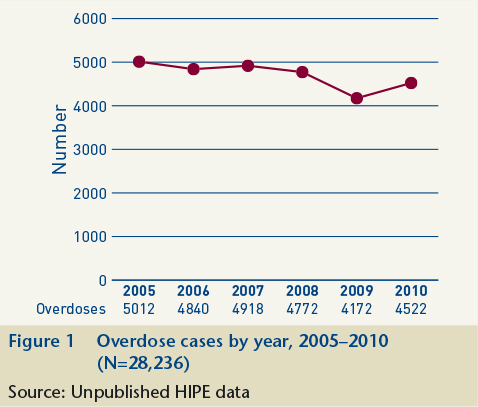
Characteristics of cases
Gender
In the years 2005–2010 there were more overdose cases among females than among males (Figure 2), with females accounting for 53% of all overdose cases in 2010.
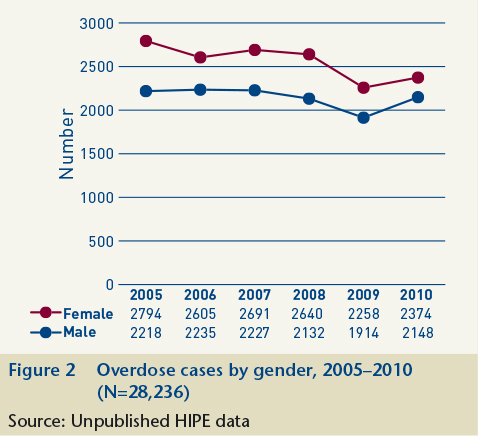
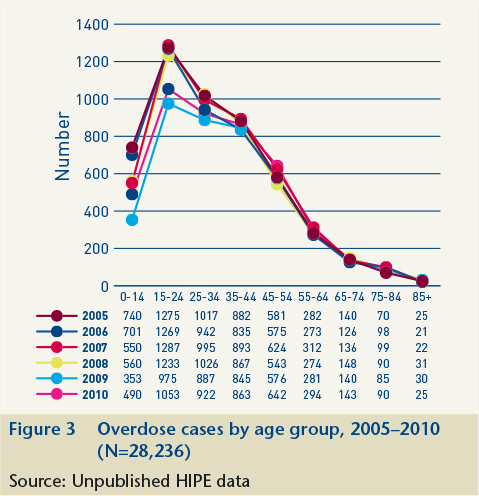
Area of residence
In 2010 there were 1,003 (22%) overdose cases among people resident in Dublin (city and county), 3,492 (77%) cases among people resident outside Dublin, and 77 cases recorded as having no fixed abode or being resident outside of Ireland.
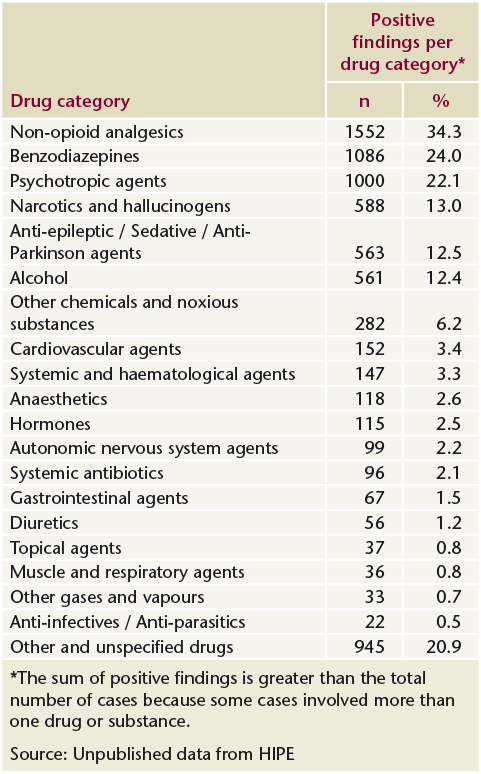
Overdoses involving narcotics or hallucinogens
Narcotic or hallucinogenic drugs were involved in 13% (588) of overdose cases in 2010. Figure 4 shows the number of positive findings of drugs in this category among the 588 cases. The sum of positive findings is greater than the total number of cases because some cases involved more than one drug from this category. Opiates were used in 80% of the cases, cocaine in 16% and cannabis in 8%.
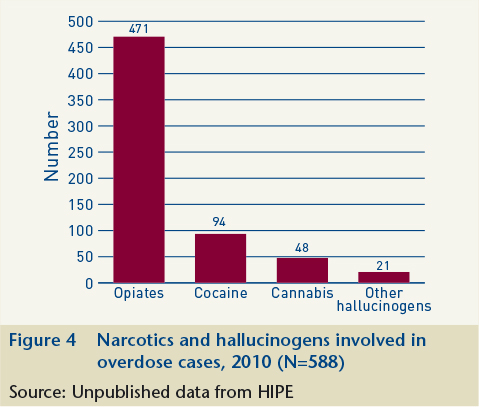
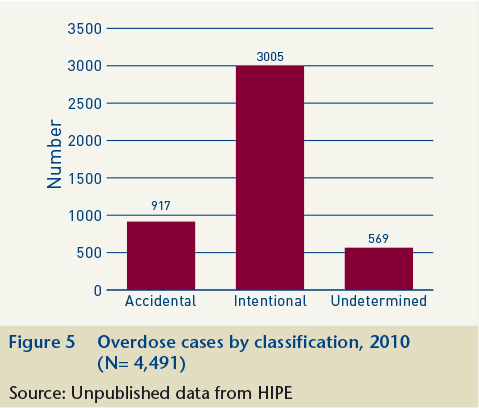
Table 2 presents the positive findings per category of drugs and other substances involved in cases of intentional overdose in 2010. Non-opioid analgesics were involved in 42% (1,258) of cases, benzodiazepines in 28% (832) and psychotropic agents in 27% (820).
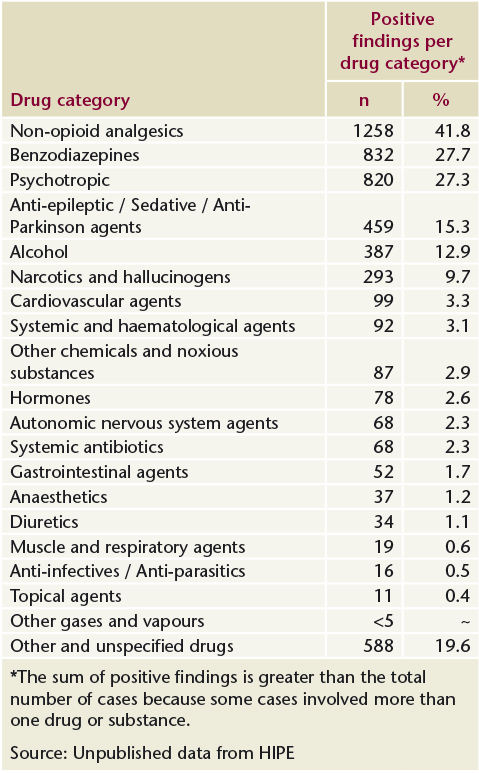
A Substance use and dependence > Effects or consequences
G Health and disease > Substance use disorder (addiction) > Drug use disorder > Drug intoxication > Poisoning (overdose)
J Health care, prevention, harm reduction and treatment > Type of care > Emergency care
J Health care, prevention, harm reduction and treatment > Health care programme, service or facility > Hospital
T Demographic characteristics > Adolescent / youth (teenager / young person)
T Demographic characteristics > Young adult
VA Geographic area > Europe > Ireland
Repository Staff Only: item control page